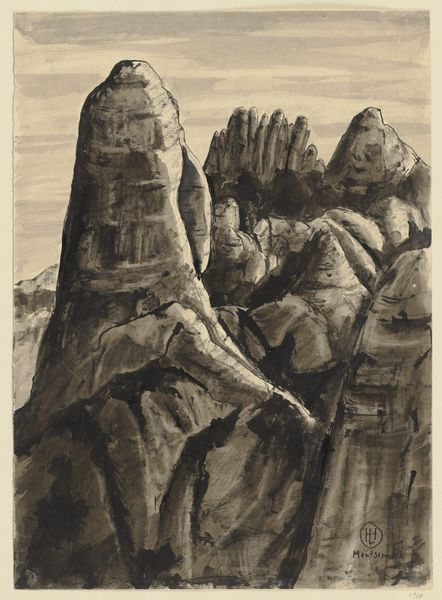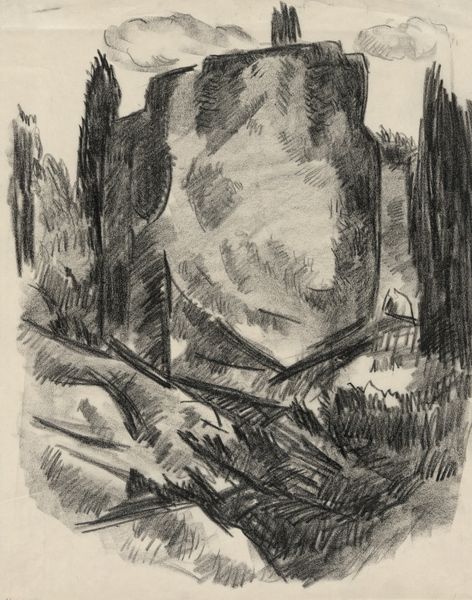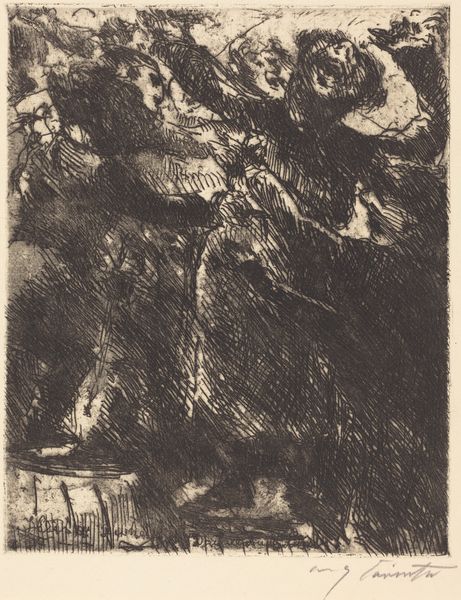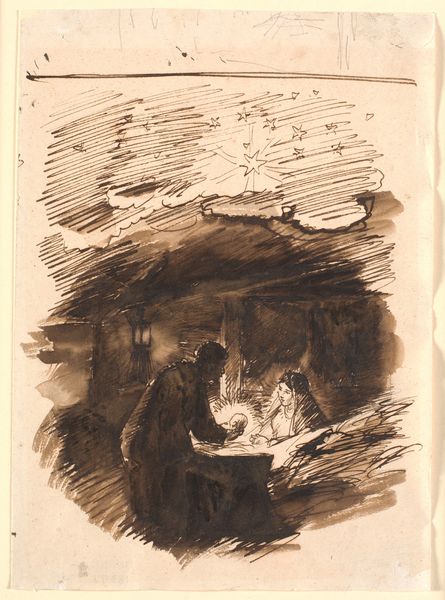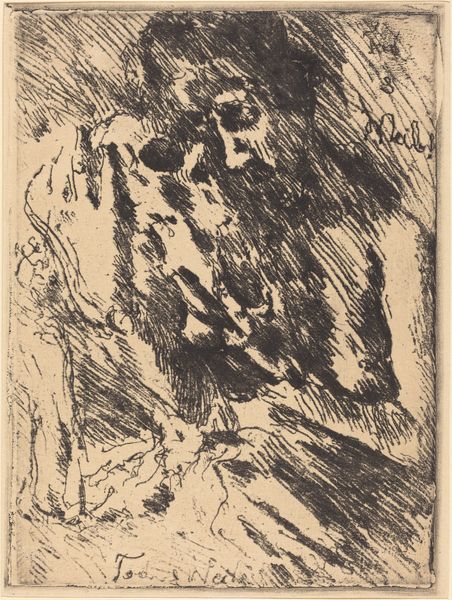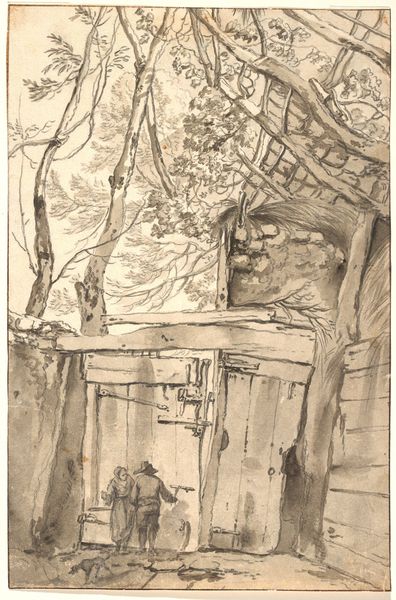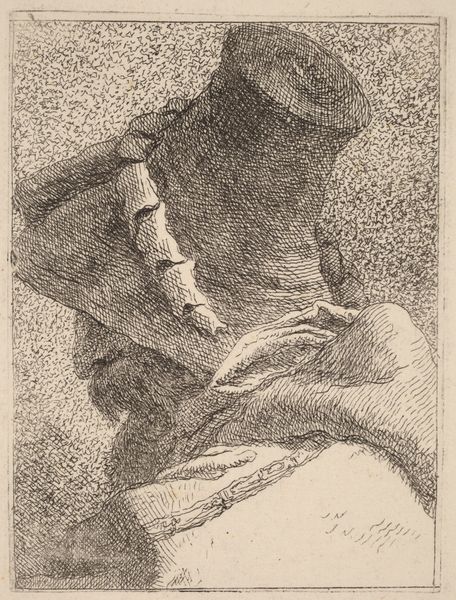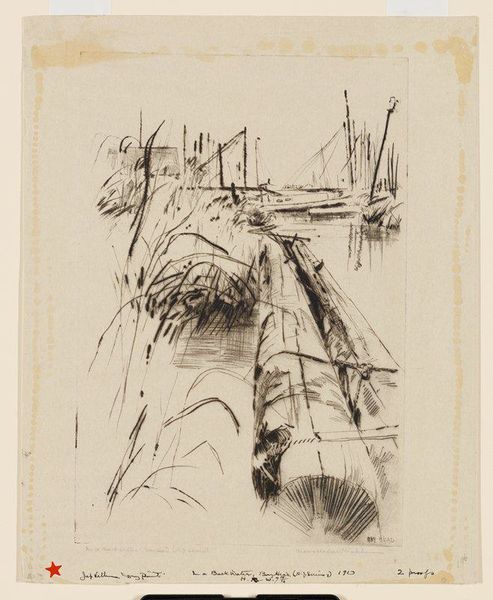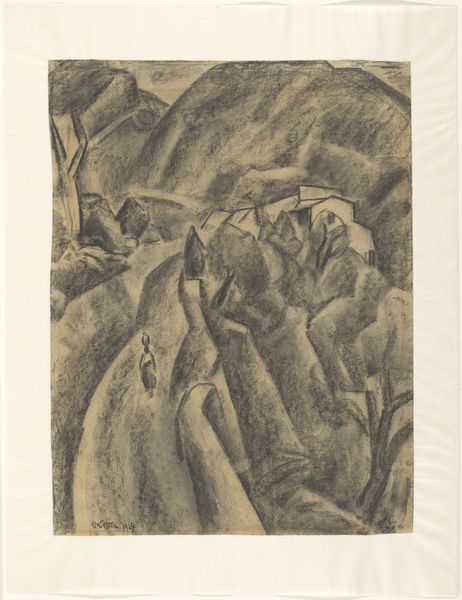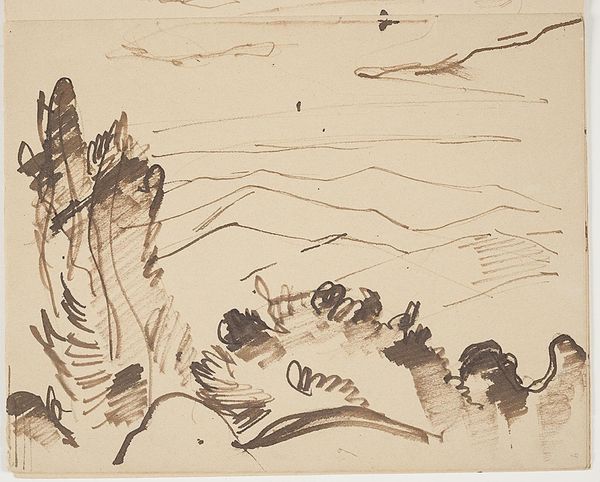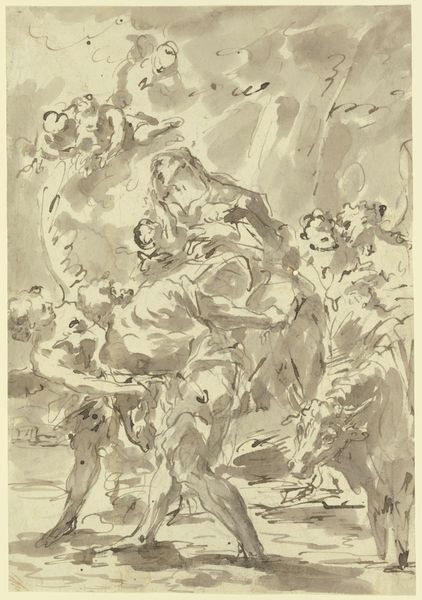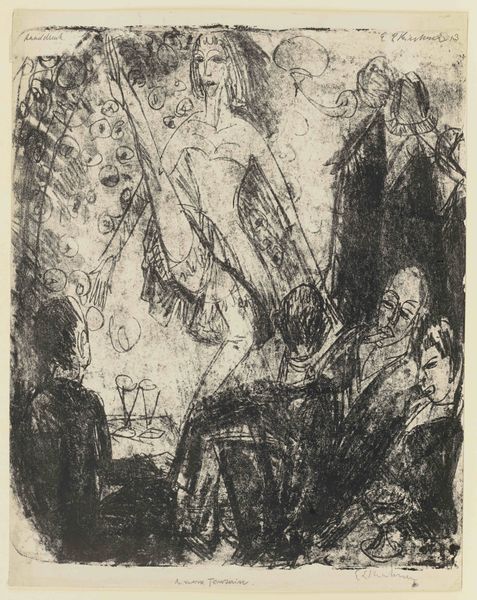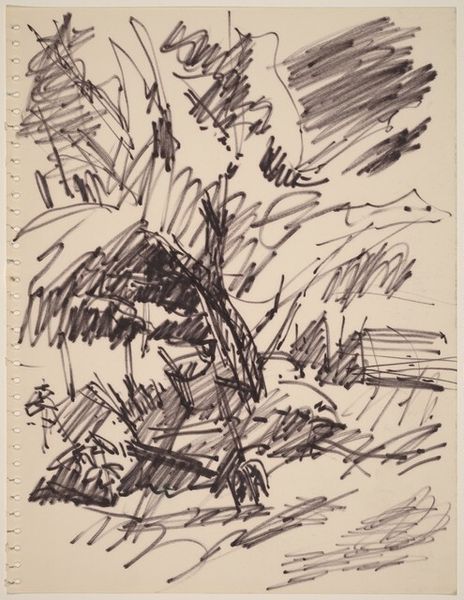
drawing, paper, ink
#
17_20th-century
#
drawing
#
landscape
#
paper
#
ink
#
expressionism
#
modernism
Copyright: Public Domain
Curator: This ink drawing on paper, titled "Montserrat," was completed by Hermann Lismann in 1928, and we are lucky to have it on view here at the Städel Museum. Editor: There's a palpable sense of weight and looming presence in this landscape. The stark contrast of blacks and grays gives it such a dramatic, almost theatrical quality. Curator: Lismann was very much part of the Expressionist movement, and that’s clearly articulated in the dynamic lines and the exaggeration of natural forms, as seen here. His work engaged directly with the sociopolitical upheavals of the early 20th century in Germany. You have to think about the rise of fascism. Editor: I completely agree. It's impossible to divorce any artwork from its political landscape. To me, this portrayal of the landscape of Montserrat carries the weight of that era—the almost oppressive feeling of the craggy mountains and the storm brewing overhead. You wonder if it mirrors Lismann’s state of mind at the time? Curator: It does, and scholars debate how overtly political this series actually was for Lismann at the time. In many ways, Expressionism offered a language through which artists could react to trauma. While his landscapes, on the surface, look merely representational, that angst comes to bear in his heavy, bold line work and inky palette. Editor: There is a constant tension in the historical evaluation of work from periods of conflict and uncertainty, especially around questions of resistance versus survival. Where do we situate an artist's practice along this spectrum when access to the artist and witnesses of the period has disappeared? What is resistance? Curator: Those questions linger, and rightfully so. It is impossible for us to look at this image today outside of these questions and larger cultural forces at play. Editor: Thinking about the symbolism imbued within Lismann’s "Montserrat" encourages us to view this stark, forbidding landscape not just as scenery, but as an allegory for the human spirit grappling with insurmountable forces. Curator: An artwork with enduring power—offering more questions than answers even a century later. Editor: And a potent reminder that art doesn’t exist in a vacuum, but actively dialogues with history.
Comments
No comments
Be the first to comment and join the conversation on the ultimate creative platform.
